 |
by Rich Brueckner on (#3T6ZX)
In this video from the Dell EMC HPC Community Meeting, Tim Carroll from Microsoft describes how the company is working with Dell EMC to move AI and HPC workloads to the Cloud. "The performance and scalability of a world-class supercomputing center is now available to everyone, on demand in the cloud. Run your Windows and Linux HPC applications using high performance A8 and A9 compute instances on Azure, and take advantage of a backend network with MPI latency under 3 microseconds and non-blocking 32 Gbps throughput."The post How Microsoft is Moving Forward with HPC in the Cloud appeared first on insideHPC.
|
 Inside HPC & AI News | High-Performance Computing & Artificial Intelligence
Inside HPC & AI News | High-Performance Computing & Artificial Intelligence
| Link | https://insidehpc.com/ |
| Feed | http://insidehpc.com/feed/ |
| Updated | 2025-12-16 10:30 |
 |
by Rich Brueckner on (#3T6W9)
Last week at ISC 2018, Cray announced that the new GENCI supercomputer in France is powered by Cray ClusterStor storage systems integrated by Atos. Named after the Nobel Prize-winning French couple, the 9 Petaflop Joliot-Curie system is made up of a BullSequana X1000 system from Atos, which includes Intel Xeon Scalable processors, Intel Xeon Phi processors, and the Cray ClusterStor storage system."The post Cray ClusterStor Powers Joliot-Curie Supercomputer in France appeared first on insideHPC.
|
 |
by Rich Brueckner on (#3T6QP)
In this video from ISC 2018, founding members of the Mousquetaire-Group announce their plans to develop an innovative supercomputer architecture based around modular computing. To be partially funded by the European Commission, the Mousquetaires will build the machine solely with European technologies, including the processor.The post Mousquetaire-Group Announces European Exascale Initiative appeared first on insideHPC.
|
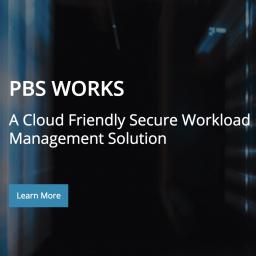 |
by staff on (#3T62C)
"The best software tools are fast, reliable and secure, while delivering an open architecture that provides access to best-in-class technology across the whole ecosystem,†said Dr. Bill Nitzberg, CTO for Altair PBS Works. “Altair PBS Professional v18 truly delivers on this vision with a deep set of new features that improve performance, increase utilization, ease administration, and also supports the most promising new solutions in the HPC ecosystem - containers, cloud bursting, the ARM platform, etc. This is a great release.â€The post PBS Professional V18 Steps Up with Support for ARM, Containers and more for HPC appeared first on insideHPC.
|
by Rich Brueckner on (#3T5T4)
In this video from ISC 2018, Rob Lalonde describes how Univa products optimize on-premise clusters and migration to the Cloud. "Univa is the leading independent provider of software-defined computing infrastructure and workload orchestration solutions. Univa’s intelligent cluster management software increases efficiency while accelerating enterprise migration to hybrid clouds. We help hundreds of companies to manage thousands of applications and run billions of tasks every day."The post Univa: Optimizing On-Premise Clusters and Migration to the Cloud appeared first on insideHPC.
 |
by staff on (#3T512)
In this time-lapse video, engineers at the Jülich Supercomputing Centre begin building the new JUWELS supercomputer. "When it comes to developing innovative supercomputer architectures, Europe is about to take the lead. A striking example of this is the new supercomputer that is due to start user operation at the Jülich Supercomputing Centre in the next few days."The post Time-Lapse Video: Building the New JUWELS Supercomputer in Germany appeared first on insideHPC.
|
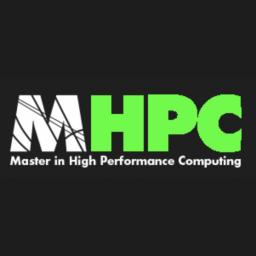 |
by Rich Brueckner on (#3T4ZZ)
The SISSA and ICTP academic centers in Italy are offering an amazing opportunity for Fellowships for the Master in High Performance Computing. SISSA and ICTP host one of the largest HPC facilities in Italy, and this is your chance to boost your career in computational science. "Our aim is to prepare within 12 months of master HPC specialists, which is a fast growing job in either academy and industry settings."The post Job of the Week: Fellowships for the “Master in HPC†Program in Italy appeared first on insideHPC.
|
 |
by staff on (#3T3VN)
Argonne has selected 10 data science and machine learning projects for its Aurora Early Science Program (ESP). Set to be the nation’s first exascale system upon its expected 2021 arrival, Aurora will be capable of performing a quintillion calculations per second. "The Aurora ESP continues the ALCF tradition of delivering science on day one while helping to lay the path for hundreds of future users,†says Tim Williams, Deputy Director of Argonne’s Computational Science Division. “It’s an exciting opportunity for researchers, who get to be among the first people in the world to run code on an exascale system.â€The post Aurora Early Science Program Selects Scientific Computing Projects for Exascale appeared first on insideHPC.
|
 |
by Rich Brueckner on (#3T3T8)
This week at ISC 2018, AMD demonstrated its next generation of CPU and GPU technologies, including a first look at: 7nm AMD Radeon Vega GPU products, 12nm 2nd Generation AMD Ryzen Threadripper processors with up to 32 cores, and unprecedented customer adoption of Ryzen and Radeon products in premium OEM devices.The post AMD Takes the gloves off at ISC 2018 appeared first on insideHPC.
|
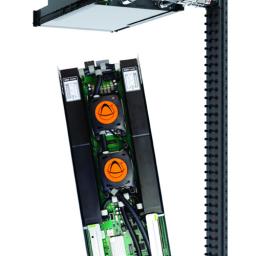 |
by staff on (#3T2WZ)
The need for high reliability cooling without reducing the rack density to handle high wattage nodes is no easy task. "Asetek’s direct-to-chip liquid cooling provides a distributed cooling architecture to address the full range of heat rejection scenarios. It is based on low pressure, redundant pumps and sealed liquid path cooling within each server node."The post Managed Implementation of Liquid Cooling appeared first on insideHPC.
|
 |
by Sarah Rubenoff on (#3T2X1)
Object detection and image search is seen as the next big thing when it comes to the search sector. And it’s easy to see why. A new white paper from NVIDIA explores how Bing deployed NVIDIA GPUs and technology to speed up object detection and visual search capabilities.The post Bing Uses NVIDIA GPUs, Tech to Enhance Object Detection and Image Search appeared first on insideHPC.
|
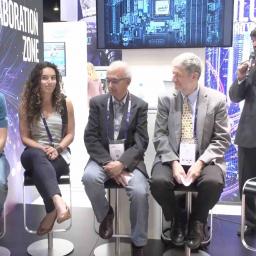 |
by Rich Brueckner on (#3T2QQ)
In this video from ISC 2018, Binay Ackalloor moderates a panel that explores the convergence of AI and HPC. "The next generation of supercomputers will provide scientists and researchers with powerful new tools to accelerate scientific discoveries and drive innovations. Intel is on the forefront of the convergence of artificial intelligence (AI), analytics, simulation and modeling and other HPC workloads that will drive the industry toward the next era in supercomputing."The post Panel Discussion: The Convergence of AI and HPC appeared first on insideHPC.
|
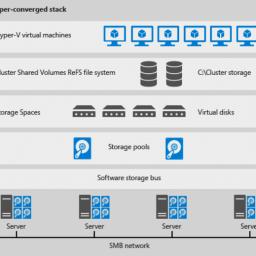 |
by Peter ffoulkes on (#3T1N1)
Dell EMC Microsoft Storage Spaces Direct Ready Nodes are built on Dell EMC PowerEdge servers, which provide the storage density and compute power to maximize the benefits of Storage Spaces Direct. "They leverage the advanced feature sets in Windows Server 2016 Datacenter Edition to deploy a scalable hyper-converged infrastructure solution with Hyper-V and Storage Spaces Direct. And for Microsoft server environments, S2D scales to 16 nodes in a cluster, and is a kernel-loadable module, (with no RDMA iWarp or RoCE needed) which is a low risk approach to implementing an S2D cluster."The post Networking Dell EMC Microsoft Storage Spaces Direct Ready Nodes appeared first on insideHPC.
|
 |
by Rich Brueckner on (#3T1HB)
In this video from ISC 2018, Binay Ackalloor from Intel describes how the company is powering the convergence of AI and HPC. "Artificial intelligence promises to transform more than just the way we do business – it will touch every corner of society. From using image recognition to enhance public security, to giving automated services a human touch with natural language processing, Intel Xeon processors are the foundation of today’s AI and tomorrow’s transformation."The post How Intel is Powering the Convergence of HPC & AI appeared first on insideHPC.
|
 |
by staff on (#3T1FY)
Today Rescale announced new hybrid cloud innovations to enable organizations to extend their fixed on-premise high performance computing systems to the cloud. The majority of the HPC market is highly invested in on-premise infrastructure. However, leading organizations are benefiting from the flexibility, scalability and rapid innovation of the cloud.The post Rescale announces new hybrid innovations to its HPC cloud platform appeared first on insideHPC.
|
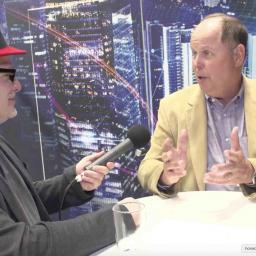 |
by Rich Brueckner on (#3T1FZ)
In this video from ISC 2018, Joe Yaworski from Intel describes how the newly announced Intel® Omni-Path fabric, Intel® OPA200 interconnect will speed up HPC and AI applications. "Intel shared at ISC its next-generation Omni-Path Architecture (Intel® OPA200), coming in 2019, which will provide data rate speeds up to 200 Gb/s, doubling the performance of the previous generation. This next-generation fabric will be interoperable and compatible with the current generation of Intel® OPA. Intel® OPA200’s high-performance capabilities and low-latency at scale will provide system architects the ability to scale to tens of thousands of nodes while benefiting from improved total cost of ownership."The post Announcing the next generation of Intel® Omni-Path fabric, Intel® OPA200 appeared first on insideHPC.
|
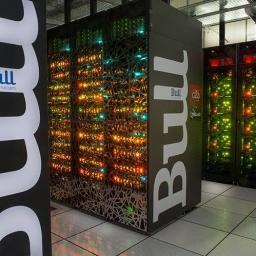 |
by staff on (#3T1B3)
Today Atos announced that the company has successfully deployed Tera 1000, the most powerful European general-purpose supercomputer with a computing power of 25 petaflops and a very competitive power consumption of only 4 megawatts. "This spot in the top-500 ranking reflects the successful collaboration between Atos and the CEA, and is one of the best examples of Atos' technological excellence in high-performance computing."The post Atos Powers Tera 1000 Supercomputer appeared first on insideHPC.
|
 |
by Siddhartha Jana on (#3T1A4)
Today Penguin Computing announced the availability of the Accelion managed data access platform, a complete, managed file transfer and remote access solution that gives global, cross-functional teams the ability to work with vast amounts of geographically dispersed data and do so with greater speed, security, reliability and accessibility while unifying operations and accelerating collaboration. "For the first time, Penguin Computing customers have the ability to work with remote data at record-setting speeds and mount remote storage and treat it as if it were local, even over high latency network connections. Because data movement is transparent to the application layer, this means that, in many cases, the customer may not need to make any workflow changes between working with local data and working with remote data. This can result in reduced delays in both processing time and time-to-insight."The post Penguin Computing Showcases Accelion managed data access platform appeared first on insideHPC.
|
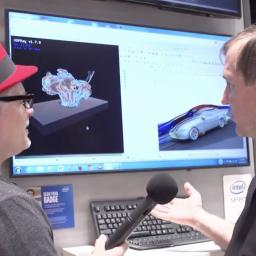 |
by staff on (#3T0W9)
In this video from ISC 2018, Jim Jeffers from Intel describes the new Intel Select Solution for Professional Visualization, an easily-deployed, Intel-optimized system reference architecture that is purpose-built to meet the demands of today’s most complex data explosion challenges. ""Visualization is a key component in advanced computing that allows systems to deliver greater insights with faster turnaround when using large-scale data sets."The post Announcing the new Intel Select Solution for Professional Visualization appeared first on insideHPC.
|
 |
by staff on (#3T0FD)
Today NEC Deutschland GmbH and Quobyte announced the deployment of a complete storage solution at HLRS in Germany. The HLRS facility is one of the top 20 supercomputing sites in the world and is amongst the top three in Germany. The facility is used by researchers and industry groups who typically run HPC workloads focused on Computational Fluid Dynamics (CFD), Physics, Transport and Climate, Structural Mechanics, Chemistry, Bioinformatics, and Electrical Engineering.The post NEC and Quobyte Power HPC Storage at HLRS in Germany appeared first on insideHPC.
|
 |
by staff on (#3T0CT)
This is the fourth entry in a five-part insideHPC series that takes an in-depth look at how machine learning, deep learning and AI are being used in the energy industry. Read on to learn more about computing environments options for energy exploration and monitoring.The post Computing Environments Options for Energy Exploration and Monitoring appeared first on insideHPC.
|
 |
by staff on (#3T0AR)
Today Cray rolled out the new Cray Urika-CS AI and Analytics software suite for the Cray CS series and new Cray Accel AI reference configurations to help IT and AI teams. "Today’s organizations are faced with a daunting task: to quickly implement and integrate new applications that take advantage of the latest advancements in Artificial Intelligence,†said Mike Leone, senior analyst at ESG. “Successful AI application deployments require that teams overcome numerous hurdles, including infrastructure complexity and a constantly evolving technology landscape. There's an increasing demand for a simplified way to make AI workflows more efficient and sustainable by leveraging a purpose-built system that simultaneously addresses the integration, performance, and support challenges brought on by AI.â€The post Cray AI Workflow Software Suite to Jump-Start AI Deployments appeared first on insideHPC.
|
 |
by staff on (#3T06K)
Today AMD announced that the National Institute for Nuclear Physics (INFN) in Italy has picked the AMD EPYC 7351 processor to power its high-performance computing cluster. INFN, a leading European research institution, conducts theoretical and experimental research in the fields of subnuclear, nuclear, and astroparticle physics while offering access to its exceptional processing resources across Europe. "As a tier one provider of clustered compute and storage for the largest currently ongoing experiments in physics, INFN delivers access to the massive amount of processing required for advanced research in nuclear physics."The post AMD Epyc Powers HPC at National Institute for Nuclear Physics in Italy appeared first on insideHPC.
|
 |
by staff on (#3T056)
To demonstrate the unique ability to run very large enterprise HPC clusters and workloads, Univa leveraged AWS to deploy 1,015,022 cores in a single Univa Grid Engine cluster to showcase the advantages of running large-scale electronic design automation (EDA) workloads in the cloud. The cluster was built in approximately 2.5 hours using Navops Launch automation and comprised more than 55,000 AWS instances in 3 availability zones, 16 different instance types and leveraged AWS Spot Fleet technology to maximize the rate at which Amazon EC2 hosts were launched while enabling capacity and costs to be managed according to policy.The post Univa Deploys Million-core Grid Engine Cluster on AWS appeared first on insideHPC.
|
 |
by Rich Brueckner on (#3T057)
Today CoolIT Systems announced the deployment of a new liquid cooled HPC system at Dell EMC HPC and AI Innovation Lab in Round Rock, Texas. "By providing the opportunity to witness liquid cooling in action, Dell EMC allows customers to assess configuration options and performance capabilities before taking the next step to implementation,†said Patrick McGinn, VP Product Marketing & Business Development at CoolIT Systems. “CoolIT is proud to enable PowerEdge servers with liquid cooling to support higher wattage processors for increased performance, energy efficiency and rack-level density in today’s modern data centers.â€The post Dell EMC HPC and AI Innovation Lab Moves to Liquid Cooling with CoolIT Systems appeared first on insideHPC.
|
 |
by staff on (#3T032)
In this video, Steve Conway from Hyperion Research describes the HPC technology areas that have the greatest potential for growth. "Hyperion Research helps organizations make effective decisions and seize growth opportunities by providing research and recommendations in both high performance computing and emerging technology areas."The post Video: What HPC technology areas have the greatest potential for growth? appeared first on insideHPC.
|
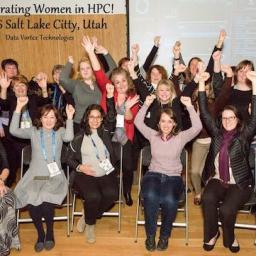 |
by staff on (#3SYT5)
Leaders, early career women, and researchers in HPC will gather again this year to participate in the Women in High Performance Computing (WHPC) events at ISC High Performance Computing. Networking and training events take place on June 27 and 28th. "Women in HPC continues to focus on addressing the growing deficit between the talent requirements in the HPC sector and the available workforce. Our goal is to help the HPC community improve on their inclusion of women and enhance our collective experiences in HPC careers,†says Dr. Toni Collis, Chair and co-founder of WHPC and Chief Business Development Officer at Appentra Solutions. “We welcome women and their allies to join us. Diversity improves ‘team IQ’ and innovation and is an important facet of ensuring HPC delivers on its potential.â€The post Women in HPC Group to host events at ISC 2018 appeared first on insideHPC.
|
 |
by staff on (#3SZDR)
It’s a fascinating time for High Performance Computing. The convergence of AI, analytics, and simulation and modeling is transforming systems and users. "So, there’s a lot to talk about it at ISC 2018, including announcements from Intel on next-generation Intel® Omni-Path Architecture and Intel® Select Solutions for Professional Visualization, to Machine Learning Day with Pradeep Dubey, and demos, presentations, and panel discussions in Intel’s Collaboration Hub."The post See How the Convergence of HPC and AI is Changing Supercomputing at ISC 2018 appeared first on insideHPC.
|
 |
by staff on (#3SYR8)
Today Lenovo announced that the company is now ranked as the leading vendor on the TOP500 list of the world's fastest supercomputers. 117 of the 500 most powerful supercomputers included in the TOP500 are Lenovo installations, meaning nearly one out of every four systems (23.4 percent) on the prestigious list is a Lenovo solution. "Last year, we set a goal to become the world’s largest provider of TOP500 computing systems by 2020. We have reached that goal two years ahead of our original plan,†said Kirk Skaugen, President of Lenovo Data Center Group.The post Lenovo is now #1 vendor of TOP500 Supercomputers appeared first on insideHPC.
|
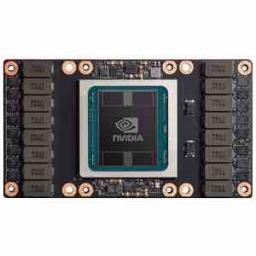 |
by staff on (#3SYR9)
Today NVIDIA is highlighting news that the world’s top AI supercomputers on the TOP500 are all powered by the company's Tensor Core GPUs. The new "AI supercomputers" on the list include Summit and Sierra in the USA and the ABCI machine in Japan. "The new TOP500 list clearly shows that GPUs are the path forward for supercomputing in an era when Moore’s Law has ended,†said Ian Buck, vice president and general manager of accelerated computing at NVIDIA.The post NVIDIA Tensor Core GPUs Accelerate World’s Fastest Supercomputers appeared first on insideHPC.
|
 |
by staff on (#3SYP3)
Today DDN announced that the company has acquired Intel’s Lustre File System business and related assets. "This important acquisition reinforces DDN’s presence as the global market leader for data at scale, while providing Lustre customers with enhanced field support and a well-funded technology roadmap. The acquisition also enables DDN to expand Lustre’s leading position from high performance computing (HPC) and Exascale into high growth markets such as analytics, AI and hybrid cloud."The post DDN Acquires Lustre Business Unit from Intel appeared first on insideHPC.
|
 |
by Rich Brueckner on (#3SYKT)
In this podcast, the Radio Free HPC team reviews the latest TOP500 list of the world’s fastest supercomputers. "The TOP500 celebrates its 25th anniversary with a major shakeup at the top of the list. For the first time since November 2012, the US claims the most powerful supercomputer in the world, leading a significant turnover in which four of the five top systems were either new or substantially upgraded."The post Radio Free HPC runs down the latest TOP500 Fastest Supercomputers appeared first on insideHPC.
|
 |
by Rich Brueckner on (#3SXFF)
In this video from ISC 2018, Nages Sieslack and Kim McMahon discuss how the conference is working to make it easier for people of all walks of life to participate in the HPC Community. "With our first event dating back over 30 years, we’ve created a community spanning the globe. Over that period we have welcomed attendees from over 80 countries, which has made ISC a highly diverse event."The post A Virtual Welcome Wagon for the HPC Community at ISC 2018 appeared first on insideHPC.
|
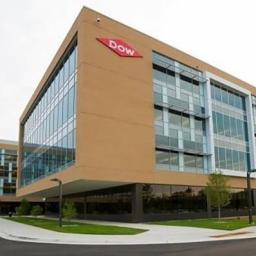 |
by Rich Brueckner on (#3SXDB)
Dow Chemical in Midland, Michigan is seeking an HPC Engineer in our Job of the Week. "The Dow Chemical Company (Dow) has an immediate opening in Midland, MI for a High Performance Computing Engineer in the Research Infrastructure and Application Support group of Information Research, Core R&D. This role will be responsible for operating and managing the R&D High Performance Computing environments at maximum efficiency with minimal downtime. Knowledge of technologies such as HPC compute clusters, high performance storage devices and high-speed interconnects are critical. This role also requires user support, documentation and consulting to ensure effective use of HPC resources and infrequent after hours support."The post Job of the Week: HPC Engineer at Dow Chemical appeared first on insideHPC.
|
 |
by staff on (#3SX5B)
In this special guest feature from Scientific Computing World, Dr Keren Bergman, Professor of Electrical Engineering at the School of Engineering and Applied Science, Columbia University discusses her keynote on the development of silicon photonics for HPC ahead of her Tuesday keynote presentation at ISC 2018. "So today we are able to make all the components of photonic links and this includes 50 GHz data modulators, 50 GHz receivers, nanosecond scale switches all kinds of structures and we can do wave division multiplexing into these interconnect structures. The capabilities are just enormous."The post Dr Keren Bergman previews ISC Keynote on Optical Computing for HPC appeared first on insideHPC.
|
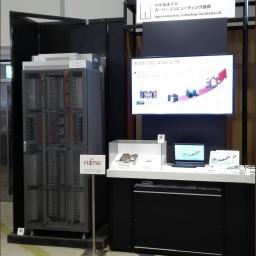 |
by staff on (#3SWB0)
Today Fujitsu unveiled details about their ARM-powered Post K exascale supercomputer, which is planned for deployment at RIKEN in Japan sometime in 2021. Fujitsu has now completed the prototype CPU chip for the machine, which may be the fastest ever commencing functionality field trials. "The Post K processor will likely become the most powerful general-purpose CPU ever for HPC and AI," said Satoshi Matsuoka from RIKEN on his blog this week.The post Fujitsu to Showcase Post-K Supercomputer CPU Prototype at ISC 2018 appeared first on insideHPC.
|
 |
by staff on (#3SVQP)
In this special guest post, Martin Meuer and Thomas Meuer welcome attendees to ISC 2018, which takes place June 24-28 in Frankfurt, Germany. "Today ISC High Performance stands proudly as a globally recognized HPC event, driven by the extensive involvement of the high performance computing community. The contribution of new topics, speakers, stringent review processes, as well as diversity efforts, makes ISC distinctive."The post Welcome to ISC High Performance 2018 appeared first on insideHPC.
|
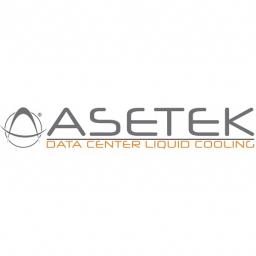 |
by staff on (#3STKB)
Today Asetek announced the deployment of the company's latest heat rejection technology at the National Center for High-Performance Computing (NCHC) in Hsinchu, Taiwan. "Announced in April, the new liquid cooled NCHC cluster to be implemented by QCT will focus on artificial intelligence. A major goal of the project is to achieve a significant PUE figure, requiring the use of liquid cooling to create a mix of liquid cooled NVIDIA V100 GPUs and Intel Xeon Scalable Processors in a high-density configuration. As one of Asetek’s newest OEM Partners, the NCHC installation by QCT represents both the first major HPC site resulting from the collaboration, and one of the first deployments of the latest InRackCDU."The post Asetek Provides Liquid Cooling QCT at NCHC in Taiwan appeared first on insideHPC.
|
 |
by staff on (#3STKC)
Today Gidel announced a new compression IP and a renewed focus on compression and encryption algorithms for the HPC and Vision markets. The compression algorithm requires extremely low power, encoding more than 1 GB/sec utilizing just 1% of the FPGA, thus opening up new possibilities for data centers in particular. "Real-time compression capability provides a number of advantages in storage and efficiency,†notes Ofer Pravda, VP Marketing & Sales at Gidel. “Compressed data can be stored in real-time, as opposed to systems that store the raw data and then compress offline at a later date."The post Gidel Launches Lossless Compression IP that Reduces FPGA Power Consumption appeared first on insideHPC.
|
 |
by staff on (#3ST9C)
Today HPC startup Sylabs announced the launch of a new program for partners. The Sylabs Partner Program offers IT providers a licensing platform that they can use to deliver the commercially supported container platform SingularityPRO through their own sales channels. This includes access to signed package repositories, backported bug and security fixes, and a portfolio of services designed for the container ecosystem. In addition, the Sylabs Partner Program will provide support, training, certifications, and architectural practices to fit the specific needs of the partner and their customers.The post Sylabs Launches Global Partner Program for HPC Containers appeared first on insideHPC.
|
 |
by staff on (#3ST5N)
Over at the HPE Blog, Bill Mannel writes that new HPE Performance Cluster Manager can help you reduce the time and resources spent administering HPC systems. "Managing HPC clusters can be challenging. Especially when you have to deal with the ever-growing large scale systems with thousands of nodes which means you need to monitor and manage more and more components. Your system administrators need a system management solution to allow them to manage even very complex HPC installations easily and quickly."The post Introducing HPE Performance Cluster Manager Software appeared first on insideHPC.
|
 |
by staff on (#3ST20)
Today Atos announced a new contract with Supercomputing Wales, the national supercomputing research facility for Wales that will result in a world-first Atos and Dell EMC supercomputing Centre of Excellence. This partnership will provide high performance computing facilities and big data research capabilities to a consortium of universities in Wales including Cardiff, Swansea, Aberystwyth and Bangor Universities. "We are thrilled to be part of such an important partnership to help continue the great work already being carried out by universities across Wales," said Richard Rawcliffe, Vice President, UK Public Sector, Dell EMC.The post Atos and Dell EMC Centre of Excellence coming to Supercomputing Wales appeared first on insideHPC.
|
 |
by staff on (#3SSM2)
GCS will host a special session on its Smart Scale strategy at ISC 2018. "Prof. Michael Resch will provide insight into the current status and development of Germany’s Smart Scale initiative and of Germany’s position in the field of HPC from an international prospective. The talk takes place Tuesday, June 26 at 12:30pm in room Panorama 2 at the Frankfurt Messe."The post Prof Michael Resch to present GCS Smart Scale Strategy at ISC 2018 appeared first on insideHPC.
|
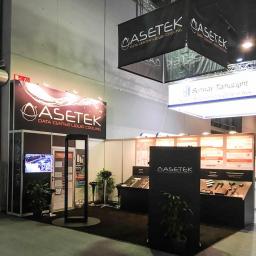 |
by staff on (#3SR82)
Today Asetek announced plans to showcase its latest liquid cooling technology integrated in Intel Compute Modules at ISC 2018 in Frankfurt. "Asetek is excited with this next step in the ongoing collaboration with Intel,†said John Hamill, Asetek Chief Operating Officer. “The integration of Asetek liquid cooling technology in Intel Compute Modules HNS2600BPBLC and HNS7200APRL serves as further validation of low pressure distributed liquid cooling for HPC and Data Center sites.â€The post Asetek Liquid Cooling comes to Latest Intel Compute Modules at ISC18 appeared first on insideHPC.
|
 |
by staff on (#3SR2Y)
Today Quantum Corp. announced plans to showcase end-to-end storage capabilities for large-scale HPC environments at ISC 2018 in Frankfurt. "As storage requirements for sensor generated data, scientific research and advanced supercomputing resources evolve, Quantum continues to invest in a solution stack and technology ecosystem to manage the largest file counts and most demanding storage environments on the globe," said Molly Presley, vice president, product management and global marketing at Quantum.The post Quantum to Showcase End-to-End HPC Storage at ISC 2018 appeared first on insideHPC.
|
 |
by staff on (#3SQXB)
Over at the Oracle Blog, Karan Batta writes that the company is working to make the Oracle Cloud one of the the best platforms for HPC workloads. "We designed our cloud with HPC as one of the core use-cases, and this influenced everything from our choice of server hardware to our data-center design with nonblocking network to ensure low-latency and high-bandwidth connectivity between compute nodes. Our new managed File Storage service is built with performance as one of its most important characteristics, enabling you to offload the management of a high-performance clustered file system."The post Oracle Cloud steps up to HPC Workloads at ISC 2018 appeared first on insideHPC.
|
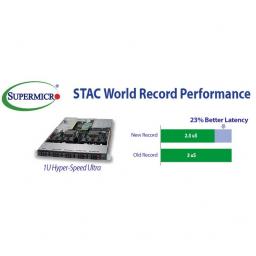 |
by staff on (#3SQXD)
Today Supermicro announced a new world record for lowest latency on the well-known STAC-N1 benchmark. "This benchmark was performed on a pair of Supermicro SYS-1029UX-LL1-S16 servers, each with dual 8-core Intel Xeon Scalable 6144 (Gold) processors overclocked at 4.18GHz. The servers were also loaded with Red Hat's Red Hat Enterprise Linux 7.5 operating system and Solarflare X2522 Adapters. Compared to all prior publicly released STAC-N1 results, the bare metal system demonstrated the lowest mean latency of 2.3 microseconds at both the base rate (100k messages per second) and the highest rate tested (1 million mps)."The post Supermicro, Red Hat, and Solarflare Set World Record STAC Performance appeared first on insideHPC.
|
 |
by staff on (#3SQR6)
After a long run for PCI Express (PCIe) Gen 3, Gen 4 is fast becoming the latest de facto standard for general purpose I/O of the modern computer system. "The ability to run PCIe over cable at full performance with complete software transparency has opened up a range of new application possibilities over the past decade for CPU to I/O system re-partitioning with expansion systems uniquely situated to take advantage of the new PCIe Gen 4 bandwidth soon available on servers."The post Implementing PCIe Gen 4 Expansion appeared first on insideHPC.
|
 |
by staff on (#3SQKR)
Nominations are solicited for the Seymour Cray, Sidney Fernbach & Ken Kennedy Awards presented at SC18 in Dallas. Nominations are due July 1, 2018.The post Seeking Nominations for the IEEE Awards at SC18 appeared first on insideHPC.
|
 |
by staff on (#3SPJT)
Today HPC cloud company XTREME-D announced a prototype version of XTREME-Stargate, a solution that combines Infrastructure as a Service (IaaS) and an HPC gateway appliance to deliver a new way to access and manage high performance cloud. The appliance will deliver an entirely new HPC cloud experience via a robust UI/UX. It also offers non- traditional billing systems that charge based on job rather than on time consumed, as is typical for SaaS or IaaS.The post XTREME-D Debuts Revolutionary IaaS for Accessing HPC in the Cloud via Gateway Appliance appeared first on insideHPC.
|